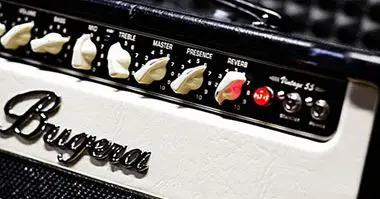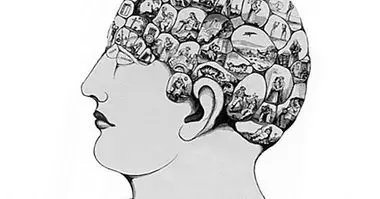Behavioral regulation: associated theories and uses in Psychology
It is well known to those who study human behavior that motivation is essential when the person pursues a goal or reinforcement. Two of the theories that try to explain this fact are the associative structure of instrumental conditioning and behavioral regulation.
Throughout this articles we will see the theories of behavioral regulation , we will explain what their precedents were and how this model is applied in behavior modification techniques.
- Related article: "Behaviorism: history, concepts and main authors"
What is behavioral regulation?
In comparison with the structural conditioning which focuses on the responses of each individual, their motivational background and the specific consequences of these; behavioral regulation covers a more extensive context.
In behavioral regulation we study all the behavioral options that an organism has at its disposal when it comes to getting something that will serve as reinforcement. It is a much more practical perspective that focuses on how the conditions of the situation or context limit or influence the behavior of the person.
- Maybe you're interested: "What is positive or negative reinforcement in Psychology?"
Precedents in Psychology and Education
As discussed earlier in instrumental conditioning the reinforcers were considered as special stimuli that caused a situation of satisfaction , and that therefore strengthened instrumental behavior.
However, not all the theoreticians were completely in agreement with these ideas, so alternatives began to emerge such as the theory of the consummatory response, the Premack principle or the hypothesis of the deprivation of response. Which would establish the bases of behavioral regulation.
1. Theory of the consummatory response
This theory developed by Sheffield and his collaborators was the first to question the rules of instrumental conditioning .
According to Sheffield there are a series of behaviors specific to the species that are self-reinforcing. Examples of these behaviors would be the eating and drinking habits. The theory of the consummatory response hypothesizes that these behaviors constitute a reinforcing response by themselves.
The revolutionary idea of this theory is to investigate the types of reinforcing responses instead of reinforcing stimuli.
- Maybe you're interested: "5 behavior modification techniques"
2. Principle of Premack
The ideas reflected in the principle of Premack supposed a progress in the existing thought on the mechanisms of reinforcement. According to this principle, the reinforcers that should be given importance were the answers instead of the stimuli.
Also known as the Principle of differential probability, theorizes that when there is a link between two stimuli (responses), that situation that is more likely to occur will positively reinforce the other with less chance of occurrence .
Premack and his team argued that a reinforcing response can be any behavior or activity that the subject perceives as positive. In this way, a behavior valued as positive or pleasant and that is carried out in a habitual way will increase the probabilities that another less attractive behavior will be carried out; but for this both have to be presented contingently .
For example, eating would be a positive reinforcement response, habitual and typical of the species. However, cooking does not have to be. However, if the person wants to get the reinforcement, in this case feed, you will have to cook even if this is not so attractive. Therefore the nice reinforcing response will also promote the other response.
3. Assumption of response deprivation
According to the hypothesis of the response deprivation proposed by Timberlake and Allison, when the reinforcing response is restricted, this response is being promoted in an instrumental way .
That is, the important thing is not with what proportion or probability a behavior is executed and not another, but the mere fact of prohibiting the reinforcing behavior will motivate the person to want to perform it.
This hypothesis can be seen reflected in an infinity of contexts or situations in which the mere fact that they forbid us to do anything will work as a motivator so that they give us more desire to do it.
This theory is totally opposed to that of Premack, since it defends that the deprivation of the reinforcing response has a greater power to encourage instrumental behavior than the differential probability of carrying out one response or another.
The behavioral regulation and the point of behavioral delight
The idea of regulation is intimately linked to the notion of equilibrium or homeostasis. This means that if people have a distribution of their activities that they find satisfactory, they will try to keep it at all costs. In this way, at the moment when something or someone interferes in that balance, the behavior must change to return to normality.
Therefore, the point of behavioral delight is the distribution of responses or behaviors preferred by the person . This distribution can be reflected in the number of times or the amount of time that is invested in an activity or behavior.
In this case we can imagine a child who likes to play video games more than studying, one activity is pleasant and the other is carried out by obligation. Consequently, the behavior distribution of this child will play 60 minutes and study 30 minutes. This would be his point of delight.
However, although this distribution is pleasant for the person does not always have to be the most healthy or appropriate. According to the theories of behavioral regulation to modify negative behavior, the imposition of an instrumental contingency is necessary.
Imposition of a behavioral contingency
The objective of the technique of the imposition of an instrumental contingency is rectify or reform the distribution of behaviors of the person causing them to move away from the point of delight . For this the therapist will resort to a series of reinforcements and punishments modifying the behavior.
If we return to the previous case, by imposing an instrumental contingency, the therapist will force the child to play the same amount of time that the child devotes to study . Therefore, if the child wants to play for 60 minutes he should study the same time; or on the contrary if you only want to study 30 minutes this will be the amount of time you will have to play.
The result will be a redistribution of the behavior that will remain between one option and the other, increasing the amount of desired behavior but without the person deviating too much from their point of delight.
The main contributions
The currents that opted for behavioral regulation as a way to increase motivation left numerous contributions and new points of view about behavior modification. These include:
- Paradigm shift in the conception of reinforcers , which go from being specific stimuli to specific responses.
- Concept of distribution of answers or behaviors as a method to increase instrumental behaviors.
- The distinction between reinforcing and instrumental responses is eliminated . Only they are distinguished within the therapeutic intervention.
- The notion of behavioral regulation develops the idea that people respond or perform a behavior with the intention of maximizing their benefits.



















